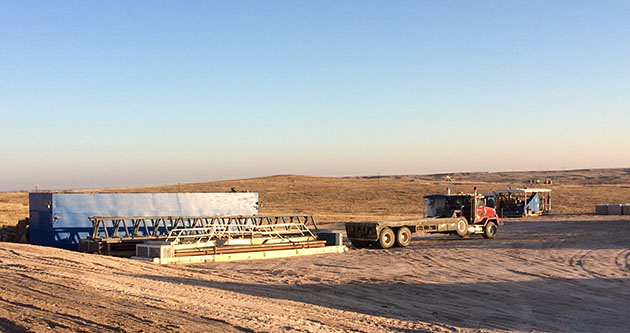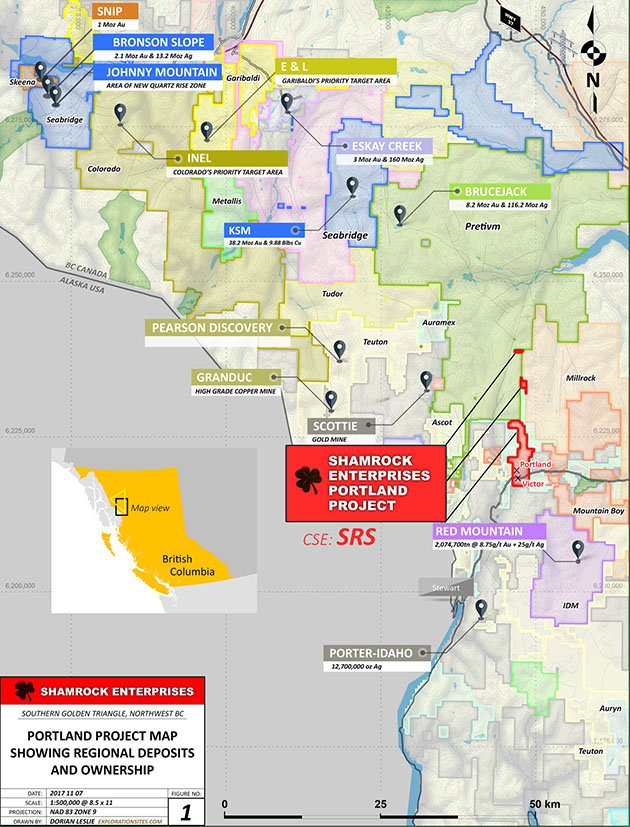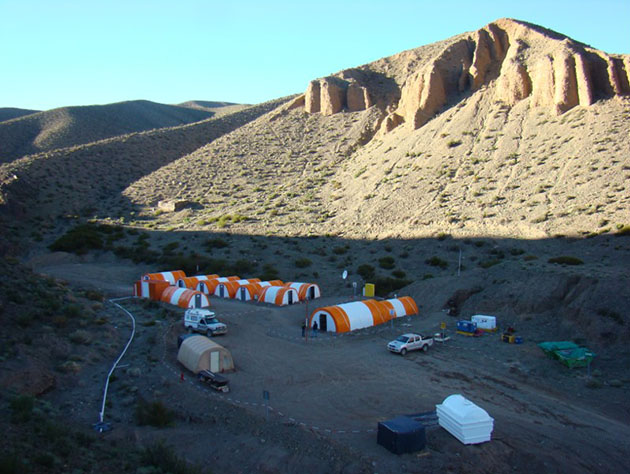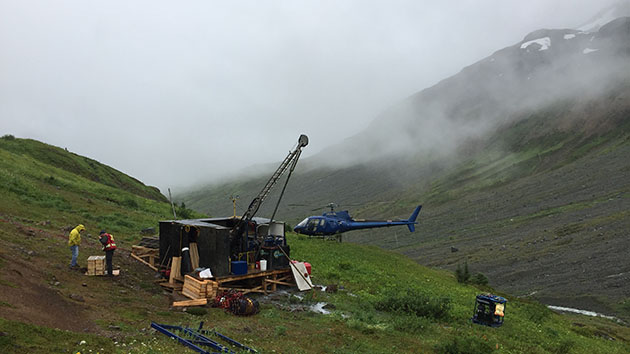When you think about oil and gas formations in Texas, names like the Permian Basin and Eagle Ford come to mind. Ask people about the Red Cave formation, and you'll most likely get blank stares. This mostly overlooked oil and gas region is in the Texas Panhandle and is beginning to come into its own.
Red Cave is mainly noted for natural gas production. Among the players in the area are:
Panhandle Oil & Gas, Inc. (PHX:NYSE) dates back to 1926, when it was formed as a co-op; it converted to a public company in 1979. Some 66% of the company's proved reserves are natural gas. The company does not operate any wells, instead it partners with larger oil and gas companies for exploration and development.
DCP Midstream LP (DCP:NYSE) is a master limited partnership (MLP) that transports and processes natural gas; among its 61 plants are facilities in the Red Cave region.
Pioneer Natural Resources Co. (PXD:NYSE), one of the largest operators in the region, has more than 700 wells on some 246,000 gross acres. However, the company has announced that it plans to sell off its assets in the area to become a Permian Basin "pure-play."
"Once Molori can successfully establish strong oil flows from these new wells and show just how attractive this brand new oil play truly is, the sky is the limit." - Keith Kohl, Pure Energy Trader
Oil has not fared as well as gas in the Red Cave formation. The formation is relatively shallow, located between 1900 and 2500 feet below surface, but is tight, so while oil and gas were clearly present, drilling did not prove to be economic in the 1960s and 1970s. In the 1980s, small-scale fracking also failed. Operators in the region drilled through the Red Cave formation into the lower Brown Dolomite formation, which was more productive. Today, Brown Dolomite formation is pretty much drilled out.
It wasn't until recently that economic production of Red Cave has become viable. A private company called Adams Affiliates experimented with large-scale fracs and found success. Virtually all of the company's more than 50 wells discovered oil, and Initial Production (IP) rates have varied between 30 and 125 barrels of oil equivalent per day (boepd).
Now another company, Molori Energy Inc. (MOL:TSX.V; MOLOF:OTCQB), appears poised to build off that success. It has land adjacent to Adams' productive wells. A year and a half ago, the company undertook an extensive evaluation of the Red Cave formation analyzing "approximately 370 well logs and cores from wells that were drilled through the Red Cave and down into the now largely depleted Brown Dolomite formation." Combining this data with Adams Affiliates drill data on file with the Texas Railway Commission gives Molori an extensive database on which to base its exploration.
Molori CEO Joel Dumaresq stated, "Dozens of well logs have been accumulated and analyzed resulting in a strong understanding of this 'virgin' and previously poorly understood hydrocarbon bearing formation."
"We believe that the Red Cave play is one of the most promising onshore development opportunities in the continental U.S. today, and with oil testing the $70 mark the economics of the play are highly compelling and warrant our full capital and attention," Dumaresq commented.
To test the model, Molori drilled its first well, Thompson 23-1R. Initial Production was approximately 28 boepd, and the company has begun to sell the oil. The company noted that its "ability to access light oil from the Red Cave demonstrates proof of concept of Molori's thesis on the productivity of the Red Cave Formation."
Molori's technical team, by analyzing that initial well, believes that tweaking the frac treatments "will significantly enhance flow from the Red Cave formation in future wells."
The company now plans to drill more wells. It has completed a trade with Ponderosa Energy LLC, swapping out marginally productive leases in Hutchinson County for 100% interest in all its Red Cave oil and gas acreage in Moore Country.
And Molori just announced that it has signed a letter of intent to acquire 30,000 additional acres in Moore County.
Molori will pay $1.7 million to Wolf Energy, LLC for a 100% working interest "in existing oil and gas wells, salt water disposal wells, together with all interest in properties, facilities and equipment" on the property.
The company noted that the property includes "34 operated Red Cave wells, 1 salt water disposal well, 4 Red Cave wells that have not been fracked, along with 8 wells currently producing."
Dumaresq stated, "Our initial focus is upon the Baker 39 Lease, which while only 562 acres of the overall 30,000 acres, provides infill drilling potential for as many as 55 wells upon 10-acre spacing. With 8 wells on this lease demonstrating historical IPs of between 50 and 100 boepd, we are excited to commence the work on the Baker lease, the next phase of Molori's development program."
"Upon completion of the acquisition of this 30,000 acre parcel, and when added to its current acreage, Molori will have access to several hundred well locations upon 10-acre spacing and double that number should the Company eventually move to 5-acre spacing. Management of Molori believes that the shallow, low cost, high-recycle rate of these Red Cave wells is what strongly differentiates this opportunity," Molori stated.
The company notes that drilling costs for Red Cave wells are relatively modest in comparison to those in the Permian Basin. While a well in the Permian Basin could cost between $5 million and $7 million and have a payback period of two to three years, a well in Red Cave formation could only cost $250,000 and be paid back in six months.
Using 10 acre spacing, the company could potentially have hundreds of wells and transform Red Cave from a forgotten area to an economically viable producer.
Keith Kohl noted on April 27 in Pure Energy Trader that Molori Energy isn't "your typical Texas oil play," it's a "virgin oil play" because the tight formations of the Red Cave were passed over for the lower pay zones. "Not only was it not well understood, but it also means that nearly all of the original oil-in-place is still trapped in the rock," Kohl stated.
Kohl noted that land is much less expensive in the Red Cave formation, "Molori can pick up land at around $50-60 per acre—compared to companies in the Permian, where an acre can go for more than $60,000 a pop!" and that drilling is much less expensive also. "While your typical shale driller is spending several million per well, and recovering that cost over the next few years, Adam's wells in the Red Cave cost around $250,000 apiece," Kohl stated.
"Once Molori can successfully establish strong oil flows from these new wells and show just how attractive this brand new oil play truly is, the sky is the limit," Kohl concluded.
Technical analyst Clive Maund charted Molori on April 23 and noted that the stock "continues to be rated a strong buy here, and it looks even more attractive as oil is continuing to advance, which is believed to be due to the increasing shortfall resulting from Venezuela becoming defunct."
Read what other experts are saying about:
Want to read more Energy Report articles like this? Sign up for our free e-newsletter, and you'll learn when new articles have been published. To see a list of recent articles and interviews with industry analysts and commentators, visit our Streetwise Interviews page.
Disclosure:
1) Patrice Fusillo compiled this article for Streetwise Reports LLC and provides services to Streetwise Reports as an employee. She or members of her household own securities of the following companies mentioned in the article: None. She or members of her household are paid by the following companies mentioned in this article: None.
2) The following companies mentioned in this article are billboard sponsors of Streetwise Reports: Molori Energy. Click here for important disclosures about sponsor fees. As of the date of this article, an affiliate of Streetwise Reports has a consulting relationship with Molori Energy. Please click here for more information. An affiliate of Streetwise Reports is conducting a digital media marketing campaign for this article on behalf of Molori Energy. Please click here for more information.
3) Comments and opinions expressed are those of the specific experts and not of Streetwise Reports or its officers. The information provided above is for informational purposes only and is not a recommendation to buy or sell any security.
4) The article does not constitute investment advice. Each reader is encouraged to consult with his or her individual financial professional and any action a reader takes as a result of information presented here is his or her own responsibility. By opening this page, each reader accepts and agrees to Streetwise Reports' terms of use and full legal disclaimer. This article is not a solicitation for investment. Streetwise Reports does not render general or specific investment advice and the information on Streetwise Reports should not be considered a recommendation to buy or sell any security. Streetwise Reports does not endorse or recommend the business, products, services or securities of any company mentioned on Streetwise Reports.
5) From time to time, Streetwise Reports LLC and its directors, officers, employees or members of their families, as well as persons interviewed for articles and interviews on the site, may have a long or short position in securities mentioned. Directors, officers, employees or members of their immediate families are prohibited from making purchases and/or sales of those securities in the open market or otherwise from the time of the interview or the decision to write an article, until one week after the publication of the interview or article. As of the date of this article, officers and/or employees of Streetwise Reports LLC (including members of their household) own securities of Molori Energy, a company mentioned in this article.
Disclosure from Pure Energy Trader, April 27, 2018
Neither the publisher nor the editors are registered investment advisors; nor have either publisher or editors been compensated for this publication, or ongoing coverage.
CliveMaund.com Disclosure:
The above represents the opinion and analysis of Mr Maund, based on data available to him, at the time of writing. Mr. Maund's opinions are his own, and are not a recommendation or an offer to buy or sell securities. Mr. Maund is an independent analyst who receives no compensation of any kind from any groups, individuals or corporations mentioned in his reports. As trading and investing in any financial markets may involve serious risk of loss, Mr. Maund recommends that you consult with a qualified investment advisor, one licensed by appropriate regulatory agencies in your legal jurisdiction and do your own due diligence and research when making any kind of a transaction with financial ramifications. Although a qualified and experienced stock market analyst, Clive Maund is not a Registered Securities Advisor. Therefore Mr. Maund's opinions on the market and stocks can only be construed as a solicitation to buy and sell securities when they are subject to the prior approval and endorsement of a Registered Securities Advisor operating in accordance with the appropriate regulations in your area of jurisdiction.
Clive Maund: I, or members of my immediate household or family, own shares of the following companies mentioned in this article: None. I personally am, or members of my immediate household or family are, paid by the following companies mentioned in this article: None. My company has a financial relationship with the following companies mentioned in this article: None.



























































